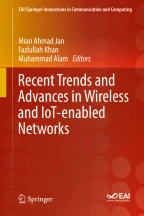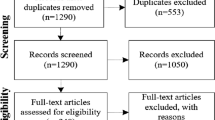Usability Attributes for Mobile Applications: A Systematic Review

The usability of mobile applications (apps) is an emerging area of research because of the increasing use of mobile devices around the world. App development is challenging because each application has its own purpose, and each individual user has different needs and expectations from the apps. There are various apps available for each purpose, and the success of the application depends on its usefulness. This paper presents a systematic review of some of the most contemporary apps and highlights their usability attributes. It discusses usability models, frameworks and guidelines outlined in previous research for designing apps with enhanced usability characteristics. Based on this research, comprehensive guidelines for mobile apps’ usability can then be provided.
This is a preview of subscription content, log in via an institution to check access.
Access this chapter
Subscribe and save
Springer+ Basic
€32.70 /Month
- Get 10 units per month
- Download Article/Chapter or eBook
- 1 Unit = 1 Article or 1 Chapter
- Cancel anytime
Buy Now
Price includes VAT (France)
eBook EUR 96.29 Price includes VAT (France)
Hardcover Book EUR 121.31 Price includes VAT (France)
Tax calculation will be finalised at checkout
Purchases are for personal use only
Similar content being viewed by others

A systematic literature review of mobile application usability: addressing the design perspective
Article 02 August 2022

Mobile Usability: Review, Classifications and Future Directions
Chapter © 2020

Design Techniques for Usability in m-Commerce Context: A Systematic Literature Review
Chapter © 2021
References
- Zhang, D., & Adipat, B. (2005). Challenges, methodologies, and issues in the usability testing of mobile applications. International Journal of Human-Computer Interaction., 18(3), 293–308. ArticleGoogle Scholar
- Gafni, R. (2009). Usability issues in mobile-wireless information systems. Issues in Informing Science and Information Technology, 6, 755–769. ArticleGoogle Scholar
- Harrison, R., Flood, D., & Duce, D. (2013). Usability of mobile applications: Literature review and rationale for a new usability model. Journal of Interaction Science, 1(1), 1–16. ArticleGoogle Scholar
- Popa, M. (2010). Audit process during projects for development of new mobile it applications. Informatica Economica, 14(3), 34. Google Scholar
- Pocatilu, P., & Boja, C. (2009). Quality characteristics and metrics related to M-Learning process. Amfiteatru Economic, 11(26), 346–354. Google Scholar
- Fleming, I. (2016). An overview of the ISO 9126-1 software quality model definition, with an explanation of the major characteristics, from http://www.sqa.net/iso9126.html
- Rabi'u, S., Ayobami, A. S., & Hector, O. P. (2012). Usability characteristics of mobile applications. In Proceedings of international conference on behavioural & social science research (ICBSSR), Kampar, Malaysia. (Indexed by Thomson Reuters). Google Scholar
- Alturki, R. M., & Gay, V. (2016). A systematic review on what features should be supported by fitness apps and wearables to help users overcome obesity. International Journal of Research in Engineering and Technology, 5(9), 197–206. ArticleGoogle Scholar
- Functionality of mobile apps in health interventions: A systematic review of the literature. JMIR mHealth and uHealth, 3(1), e20. Google Scholar
- Kim, S., Lee, I., Lee, K., Jung, S., Park, J., Kim, Y. B., et al. (2010). Mobile web 2.0 with multi-display buttons. Communications of the ACM, 53(1), 136–141. ArticleGoogle Scholar
- Gebauer, J., Shaw, M. J., & Gribbins, M. L. (2010). Task-technology fit for mobile information systems. Journal of Information Technology, 25(3), 259–272. ArticleGoogle Scholar
- Sonderegger, A., & Sauer, J. (2010). The influence of design aesthetics in usability testing: Effects on user performance and perceived usability. Applied Ergonomics, 41(3), 403–410. ArticleGoogle Scholar
- Adipat, B., Zhang, D., & Zhou, L. (2011). The effects of tree-view based presentation adaptation on mobile web browsing. MIS Quarterly, 35(1), 99–122. ArticleGoogle Scholar
- Leung, R., McGrenere, J., & Graf, P. (2011). Age-related differences in the initial usability of mobile device icons. Behaviour & Information Technology, 30(5), 629–642. ArticleGoogle Scholar
- Kim, K., Proctor, R. W., & Salvendy, G. (2012). The relation between usability and product success in cell phones. Behaviour & Information Technology, 31(10), 969–982. ArticleGoogle Scholar
- Aryana, B., & Clemmensen, T. (2013). Mobile usability: Experiences from Iran and Turkey. International Journal of Human-Computer Interaction, 29(4), 220–242. ArticleGoogle Scholar
- Baharuddin, R., Singh, D., & Razali, R. (2013). Usability dimensions for mobile applications—A review. Research Journal of Applied Sciences, Engineering and Technology, 5, 2225–2231. ArticleGoogle Scholar
- Boja, C., Doinea, M., & Pocatilu, P. (2013). Impact of the security requirements on mobile applications usability. Academy of Economic Studies. Economy Informatics, 13(1), 64. Google Scholar
- Hao, S., Li, D., Halfond, W. G., & Govindan, R. (2013). Estimating mobile application energy consumption using program analysis. In 2013 35th international conference on software engineering (ICSE) (pp. 92–101). IEEE. Google Scholar
- O’Malley, G., Dowdall, G., Burls, A., Perry, I. J., & Curran, N. (2014). Exploring the usability of a mobile app for adolescent obesity management. JMIR mHealth and uHealth, 2(2), e29. ArticleGoogle Scholar
- Al-Wakeel, L., Al-Ghanim, A., Al-Zeer, S., & Al-Nafjan, K. (2015). A usability evaluation of arabic mobile applications designed for children with special needs—Autism. Lecture Notes on Software Engineering, 3(3), 203. ArticleGoogle Scholar
- Zapata, B. C., Fernández-Alemán, J. L., Idri, A., & Toval, A. (2015). Empirical studies on usability of mhealth apps: A systematic literature review. Journal of Medical Systems, 39(2), 1–19. ArticleGoogle Scholar
- Wei, Q., Chang, Z., & Cheng, Q. (2015). Usability study of the mobile library app: An example from Chongqing university. Library Hi Tech, 33(3), 340–355. ArticleGoogle Scholar
- Chintapalli, V. V., Tao, W., Meng, Z., Zhang, K., Kong, J., & Ge, Y. (2016). A comparative study of spreadsheet applications on mobile devices. Mobile Information Systems. https://doi.org/10.1155/2016/9816152ArticleGoogle Scholar
- Eraslan, E., İç, Y. T., & Yurdakul, M. (2016). A new usability evaluation approach for touch screen mobile devices. International Journal of Business and Systems Research, 10(2–4), 186–219. ArticleGoogle Scholar
Author information
Authors and Affiliations
- Faculty of Engineering and Information Technology, University of Technology Sydney, Ultimo, NSW, Australia Ryan Alturki & Valerie Gay
- Ryan Alturki


